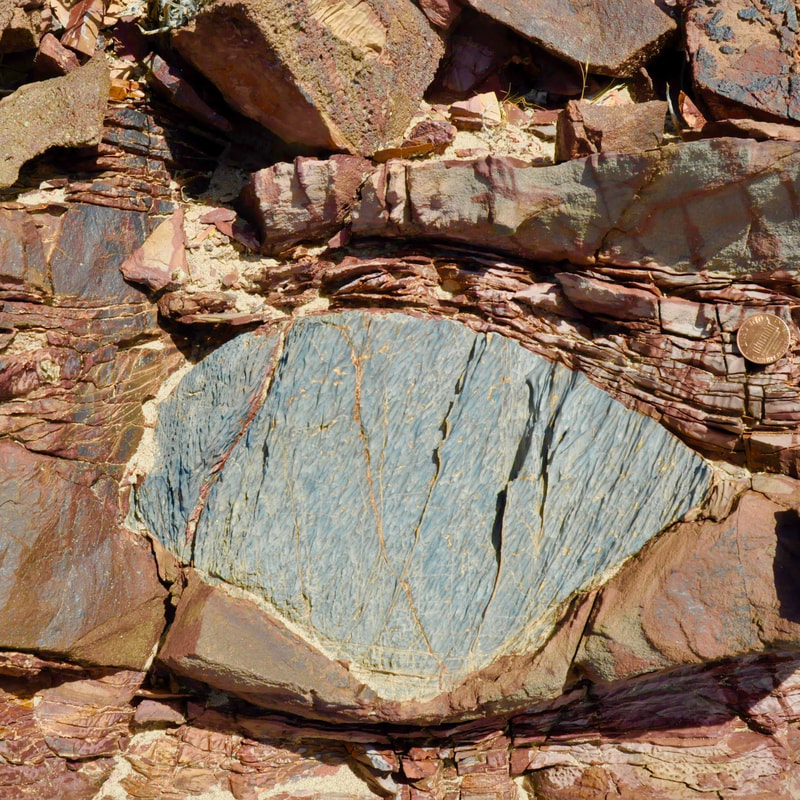Iron-rich chemical sedimentsIron-rich marine chemical sediments—such as iron formations and ironstones—were ubiquitous for much of the Precambrian, yet have no clear modern analogue. These deposits are potentially robust archives of palaeo-ocean chemistry and are a tracer for the Earth's surface oxidation state. My research has focused on resolving the palaeoenvironmental significance of sedimentary iron formations throughout geological time, and understanding the implications of these deposits for Earth system evolution.
|
Snowball EarthThe Neoproterozoic Era experienced the most severe ice ages in Earth's history, around 700 million years ago. These so-called 'Snowball Earth' events featured ice sheets at equatorial latitudes, potentially encompassing the entire planet for tens of millions of years. These climate perturbations would have had dramatic ramifications for the biosphere, and occurred broadly coincident with the emergence of the first animal life. I utilise glacial sedimentology in effort to better understand the severity and environmental conditions of these glaciations, and their possible influence on eukaryotic evolution during this time.
|
Marine ChemistryAlthough the modern Earth is characterised by oxygenated surface environments, for much of Earth's history the atmosphere and oceans remained oxygen-poor, and likely featured a distinct chemical composition. The progressive oxygenation of the atmosphere and oceans as a result of oxygenic photosynthesis was protracted and complex, and the degree of oxygenation remains poorly constrained for many time intervals. As such, the cause-and-effect relationships between surface oxidation and biotic evolution are a topic of contention. I employ geochemical analyses (trace elements, rare earth elements, iron isotopes) on marine chemical sediments as palaeoredox proxies in order to reconstruct the chemical composition and redox state of the ancient oceans, with a particular focus on time intervals that experienced significant biological advancements.
|
All photos copyright of Maxwell Lechte.



